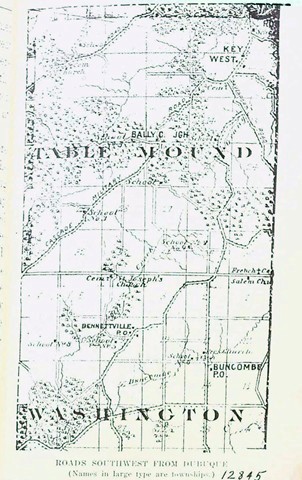Once a very long furrow was made to mark a road that crossed the country from Dubuque to Iowa City, then the capital of the Territory of Iowa. One may find out about how long this was by measuring the distance on the map. If it was one hundred miles some one will at once ask how such a long furrow came to be made.
It has been said that many persons coming to Iowa for the first time had trouble in finding their way between these two towns; and so Mr. Lyman Dillon was requested to mark this road. To do this he set out one summer day with his five yoke of oxen and great breaking plow, as it was called by the farmers who used such plows to turn the sod for the first time. A team of horses and a wagon covered with canvas to protect the men at night were also taken along.
In the morning the five yoke of oxen were hitched to the big plow and steadily all the forenoon they moved over the prairie leaving the wide furrow behind. At noon, we may think, the ox driver and his helpers stopped for lunch, while the oxen were turned loose upon the grass to gather their own food. Again all the afternoon they plowed the straight furrow, and when night came the covered wagon protected the men while they slept. The oxen had plenty of time to eat the rich grass, and the men could cut it for the horses.
In this way, day after day for a long time, Mr. Dillon plowed, until by and by, he came to the end of his task at Dubuque. Some have said that this was the longest furrow ever made, and it has been known as Dillonís furrow. This was finished long ago, in 1839, before Iowa had become a State. Soon after this long mark was made the track was well worn and people could no longer lose their way in making the journey. Ever since then this has been called the Dubuque Road.




